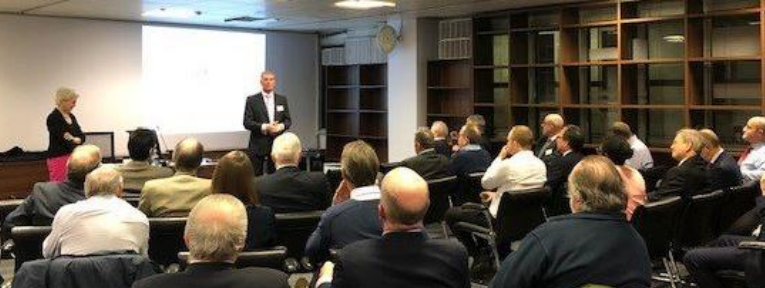Roundtable with Jane Gunn
Jane is a Professional Speaker, Mediator, Facilitator, and One-To-One Coach at Gunn Consultancy. She is Chair of the Board of Management of Chartered Institute of Arbitrators, Past President at the Professional Speaking Association and Owner of Corporate Peacemakers.
Jane opened the session with the observation that many people would rather parachute out of an aeroplane for the first time or even get their head shaved, than address difficult conflict issues at work.
And, yet it is commonly acknowledged that
“whatever is unspoken is the hardest thing to change.”
The basic premise of Jane’s presentation is that organisations should adopt the habit of addressing conflict early, and to do this they need established a clear process.Managing the process is particularly important when collaborating with other teams or organisations, where miscommunication and misunderstanding can quickly descent into conflict.
A large part of the problem is that we ignore the warning signs of early conflict, but because it is an emotive issue, the growth of dissatisfaction is exponential and so when left too long can be explosive.
Jane illustrated the conflict sequence as a stepping process through a number of stages:
Stage 1
The parties stop talking
Stage 2
They talk to others, trying to build support for their case
Stage 3
They start issuing threats
Stage 4
They take action to coerce the
others to concede or be punished
Stage 5
Positions become entrenched as egos become fixated on not losing face
Stage 6
Into the ‘abyss’ together
Conflict management is crucially about identifying conflict early and taking action.
Our brains are wired to be on alert for threat, measuring what is happening in every conversation and non-conversation.
A model for conflict management
Jane drew up a model identifying some of the key aspects of conflict management. Creating a degree of consciousness about these factors will help reduce conflict and allow for faster intervention.
Consideration – Treating others with courtesy
Connection – Being made to feel part of the ‘in group’ or excluding others
Control – A common trigger for conflict is when we feel events are beyond our control Caring – Making others feel they are heard and are important
Culture – How are things done around here
Conditioning – What bad behaviours appear to be acceptable?
The service expected from our leaders has changed and conflict management should now therefore be an important role to build better solutions, without creating the destruction that happens when we enter the abyss.
When asked if there is a particular process that could be adopted, Jane’s view was that it would vary from organisation to organisation and even from team to team. Through the questions that came from the floor, however, some of the important ingredients for conflict management are as follows:
- Having emotionally intelligent people on the team makesa significant difference.
- ‘Fist bangers’ neededhelp to understandthat aggression rarely moved them forward.
- At the start of a conversation, agreeing how we will proceedis crucial.
- Deciding when to act. This is a judgement call,e.g.is this still going to be a problem in two weeks time?
- Encourage self-determination before escalation. Encourage people to sort their own issues rather ‘pass the monkey onto someone else’s back.’
- Where is conflict likely to occur and what preemptive actions can be put in place?
- Encourage the linguistic habits of dialogue over debate.
Jane packed a lot of very useful information into a short session, but the key message I took away from the event was forteam leaders to recognize their potential tendencies to ignore conflict and to take time early in the project cycle to agree a process that encourages healthy disagreement, andalso addresses interpersonal conflict shortly after it starts to emerge.
Tony Llewellyn, January 2019
